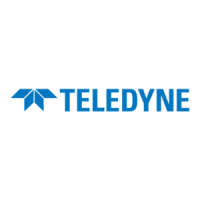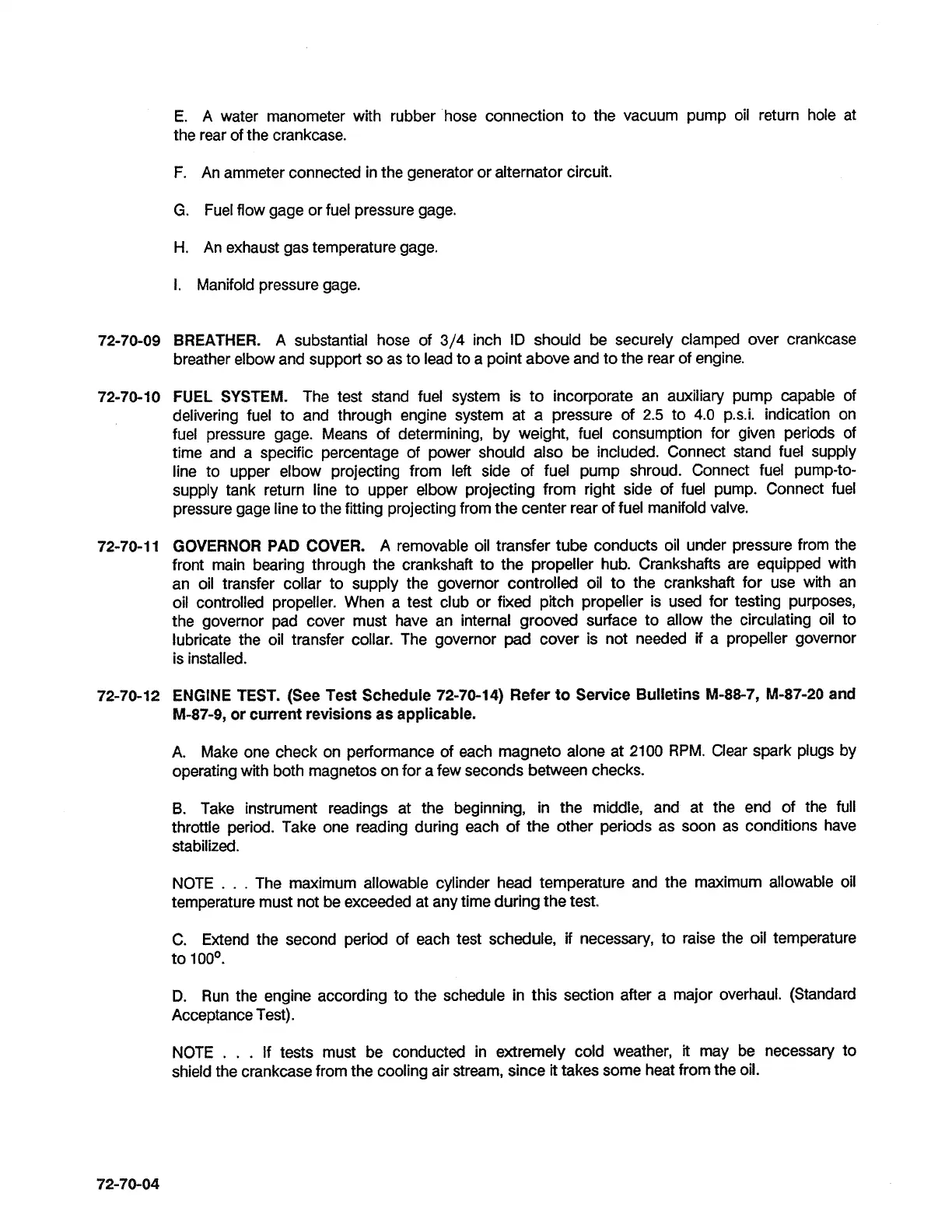E. A water manometer with rubber hose connection to the vacuum pump oil return hole at
the rear of the crankcase.
F.
An ammeter connected in the generator or alternator circuit.
G.
Fuel flow gage or fuel pressure gage.
H.
An exhaust gas temperature gage.
I.
Manifold pressure gage.
72-70-09 BREATHER.
A substantial hose of
3/4
inch ID should be securely clamped over crankcase
breather elbow and support so as to lead to a point above and to the rear of engine.
72-70-10 FUEL SYSTEM.
The test stand fuel system is to incorporate an auxiliary pump capable of
delivering fuel to and through engine system at a pressure of 2.5 to 4.0
p.s.i. indication on
fuel pressure gage. Means of determining, by weight, fuel consumption for given periods of
time and a specific percentage of power should also be included. Connect stand fuel supply
line to upper elbow projecting from left side of fuel pump shroud. Connect fuel pump-to-
supply tank return line to upper elbow projecting from right side of fuel pump. Connect fuel
pressure gage line to the fitting projecting from the center rear of fuel manifold valve.
72-70-1 1 GOVERNOR
PAD
COVER.
A removable oil transfer tube conducts oil under pressure from the
front main bearing through the crankshaft to the propeller hub. Crankshafts are equipped with
an oil transfer collar to supply the governor controlled oil to the crankshaft for use with an
oil controlled propeller. When
a
test club or fixed pitch propeller is used for testing purposes,
the governor pad cover must have an internal grooved surface to allow the circulating oil to
lubricate the oil transfer collar. The governor pad cover is not needed if a propeller governor
is installed.
72-70-12 ENGINE TEST. (See Test Schedule 72-70-14) Refer to Service Bulletins M-88-7, M-87-20 and
M-87-9, or current revisions as applicable.
A.
Make one check on performance of each magneto alone at 2100
RPM.
Clear spark plugs by
operating with both magnetos on for a few seconds between checks.
B.
Take instrument readings at the beginning, in the middle, and at the end of the full
throttle period. Take one reading during each of the other periods as soon as conditions have
stabilized.
NOTE
.
.
.
The maximum allowable cylinder head temperature and the maximum allowable oil
temperature must not be exceeded at any time during the test.
C.
Extend the second period of each test schedule, if necessary, to raise the oil temperature
to
10oO.
D.
Run the engine according to the schedule in this section after a major overhaul. (Standard
Acceptance Test).
NOTE
.
.
.
If tests must be conducted in extremely cold weather,
it
may be necessary to
shield the crankcase from the cooling air stream, since
it
takes some heat from the oil.

